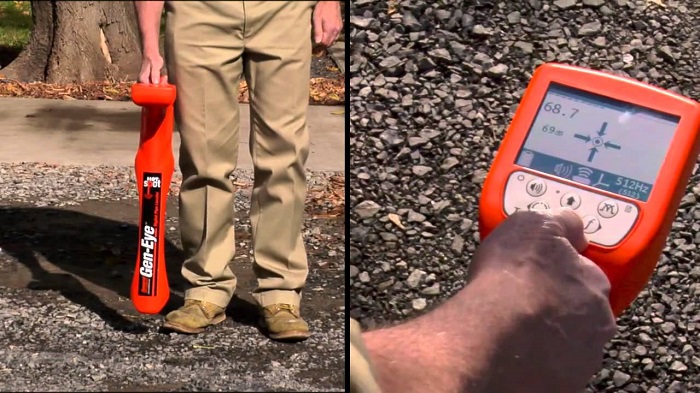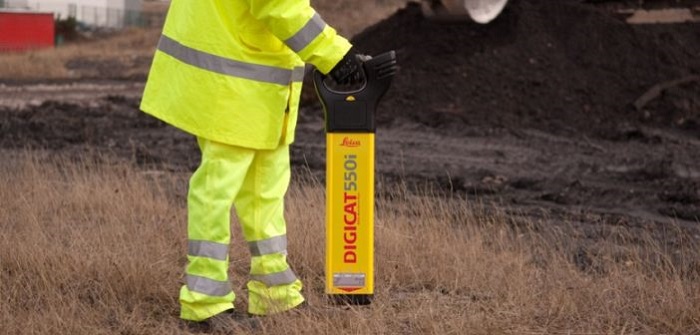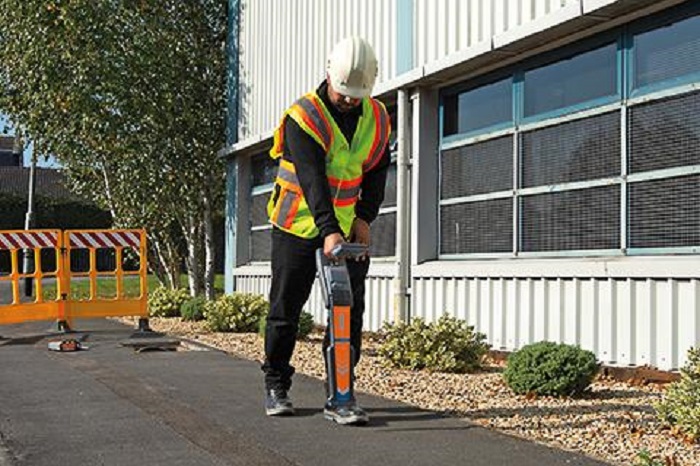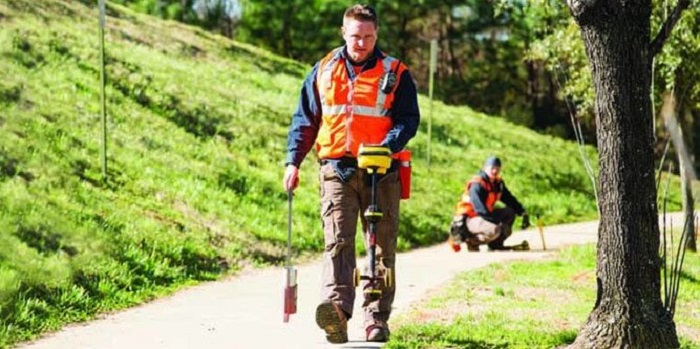Underground Utility Locators: Types and Locating Methods
Locating underground cables and pipes is becoming more challenging as their number is always on the rise. As the ground all around us has more utility lines as every day goes by, it’s important to identify their location before performing any type of excavation work in the area.
In order to successfully do so, you should contact your states one call office, and give them the location of the area that you’re planning to excavate. A one-call contractor will visit the area and ark the location of known utilities. This will typically give you a good idea of where the existing underground utilities are.

Source: Youtube
But as a result of interference, the marks may not be as accurate as you’d want them to be. In some situations, privately owned lines that aren’t known to one call contractors may end up unmarked. Many contractors show up and just start excavating, which can be fine if the one call markings are precise. However, a mark can be a few centimetres off, and you’ll miss the line.
Now you’re in a dilemma. Do you keep excavating or do you call back the one call contractor so that they can re-evaluate the area? Either way, you’re losing time and money, which is why you may want to get an underground cable pipe locator instrument. This type of test equipment can confirm whether the marks on the ground are accurate, and identify any underground utility that could have been left out.

Source: Hexagongeosystems
Locating underground utilities is quite similar to listening to the radio. Every station transmits a signal, and an underground cable pipe locator picks up the signal, helping you identify the precise location of the utility. Many underground utility lines transmit a signal or emit a charge, and every one of those lines has a different signal or charge, just like a radio station. However, some lines don’t transmit a charge or signal, in which case, you can use a transmitter to induce one into the line, allowing the locator to pick it back up.
Utility locating testers use either an active or passive method to locate underground utilities. Active locating involves looking for specific lines using either an inductive method or a direct connection. In other words, the instrument is either directly attached to the utility, or if that’s not possible, you have to select a frequency, induce it into the ground and the frequency will get reradiated by the line.
On the other hand, passive locating is generally used by contractors to scan for unknown lines. The contractor sweeps the area with the receiver looking for lines that reradiate or radiate frequencies. However, this scanning method usually doesn’t let you differentiate between the type of utilities.

Source: Lasersurveyingequipment
There are two types of utility locators – single and multiple frequency testers. Both types have their own distinct pros and cons. Single-frequency locators have been around for quite some time. They feature a transmitter that’s placed on the ground and induces a high-frequency signal, which is then picked up by the utility and radiated back to the receiver. These systems are suitable for locating pipes and lines in noncongested areas.
However, placing a high-frequency signal into the ground can light up everything underground and result in a distorted signal. In other words, you won’t be able to tell whether you’ve found a communication, gas or power line. Additionally, these devices can’t determine the depth of the utility.
Since utility lines can be made using different materials, a lower or higher frequency may be more suitable for the job, which is where multi-frequency testers come into play. Some models have up to 5 frequencies, and they allow you to tune the frequency you’re inserting into the ground based on the type of utility you’re trying to locate. The lower the frequency is, the better it will stay on the utility you’re trying to find, making the job of differentiating between utilities much easier.

Source: Nerdtechy
Some testers provide a current measurement index which measures the amount of current you’re inserting onto the utility line. This can be helpful in distinguishing between lines, especially if they cross over other lines, helping you stay on the initial line to be located. Most modern multi-frequency units feature receivers that also estimate the depth of the utility by measuring signal strength and taking advantage of an algorithm to convert this information into an estimated depth. Keep in mind that interference can contort the depth estimate. But even if you get slightly inaccurate results, you’ll still get an idea of the location of the utility as you hand dig or excavate the site with a vacuum.
And even though these testers may cost a few hundred up to several thousand dollars, they’re a well-worthy investment for any construction and excavation contractor who can’t take any chances. Hitting an underground utility can be very costly, leaving entire neighbourhoods without water, gas, internet, etc.







